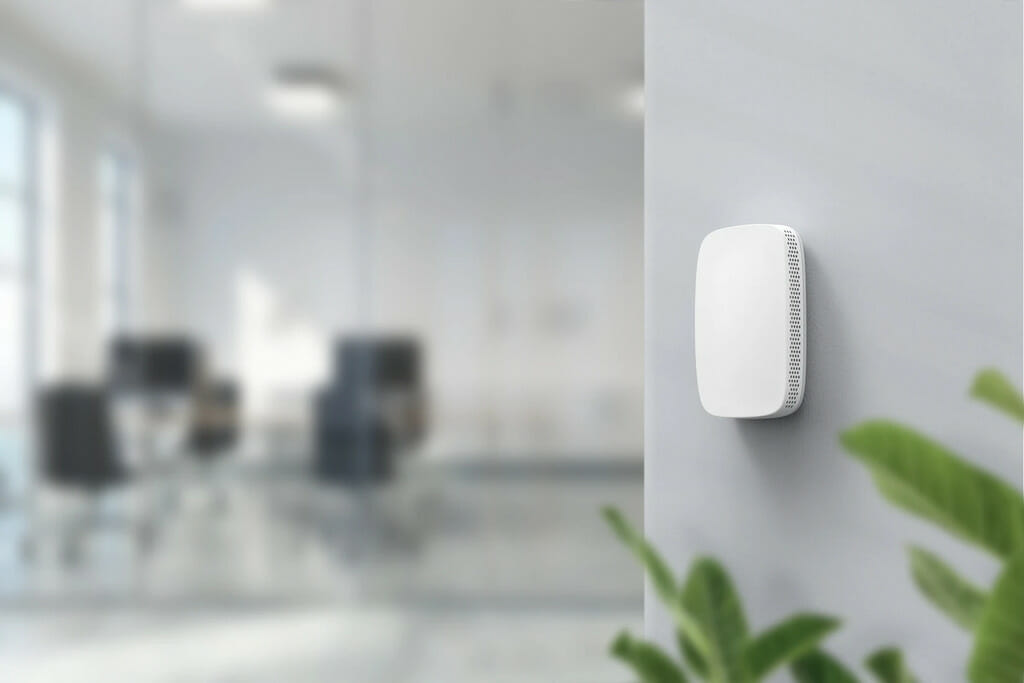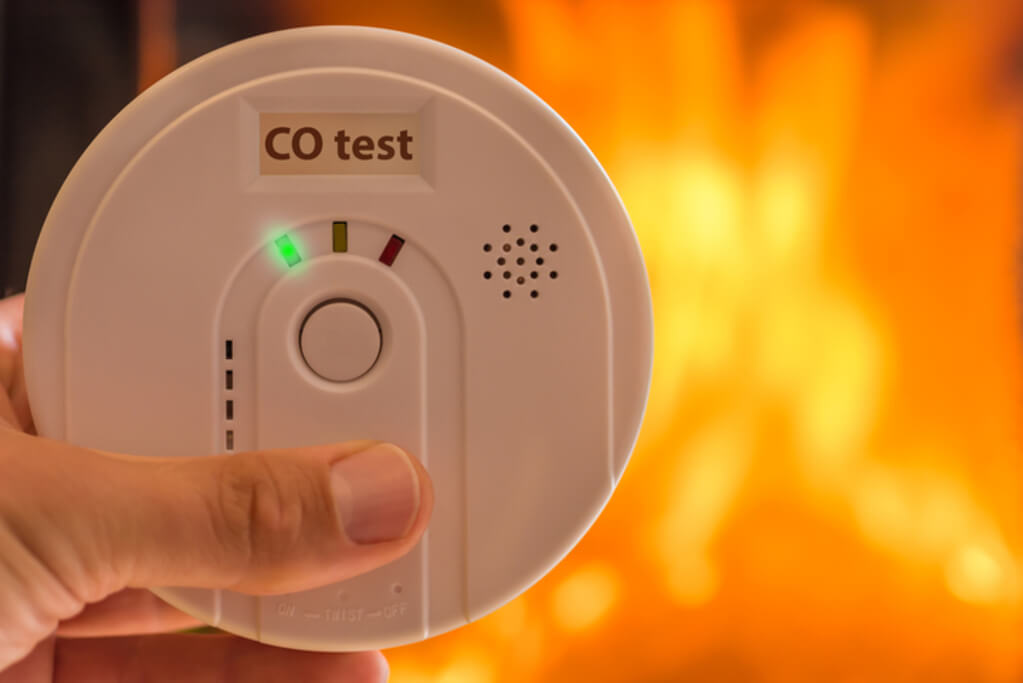Explore this post with:
In today’s world, air quality is a major concern, especially in modern buildings where ventilation is often limited. This is where CO2 sensors come into play. These devices measure the concentration of carbon dioxide in the air, which is a key indicator of indoor air quality. In this article, we will discuss in detail the importance of CO2 sensors in modern buildings and how they can help improve indoor air quality.
What Are CO2 Sensors?

CO2 sensors are electronic devices that measure the level of carbon dioxide in the air. They are often used in buildings, particularly in areas where people congregate, such as classrooms, offices, and conference rooms. CO2 sensors are designed to detect the presence of carbon dioxide in the air and provide an accurate reading of the concentration of this gas.
One of the most important benefits of CO2 sensors is that they provide an early warning of poor indoor air quality. When CO2 levels rise, it can be an indicator of other pollutants in the air, such as VOCs, dust, and mold. By detecting elevated CO2 levels, building managers can take action to identify and remediate the source of the pollutants, ensuring that indoor air quality remains healthy.
The placement of CO2 sensors is important for accurate monitoring. Sensors should be placed in areas where occupancy levels are highest, such as conference rooms, classrooms, and offices. Sensors should also be placed away from sources of CO2, such as outside air intakes and exhaust vents.
Why Are CO2 Sensors Important in Modern Buildings?

CO2 sensors are important in modern buildings because they provide an accurate measurement of indoor air quality. High levels of carbon dioxide can cause a variety of health problems, including headaches, dizziness, and fatigue.
Additionally, increased levels of carbon dioxide can be an indication that the ventilation system in a building is not functioning properly. By using CO2 sensors, building managers can monitor the concentration of carbon dioxide in the air and take appropriate measures to improve indoor air quality.
CO2 sensors can also help in identifying sources of indoor pollution and reducing their levels. These sensors can detect high concentrations of carbon dioxide, which is an indicator of poor ventilation or occupancy levels. When CO2 levels are high, it is likely that other harmful pollutants are also present in the air, which can be detected using other air quality sensors. By identifying these sources of indoor pollution, building managers can take steps to reduce their levels and improve indoor air quality.
How Do CO2 Sensors Work?

CO2 sensors work by measuring the concentration of carbon dioxide in the air. They do this by using infrared technology to detect the presence of carbon dioxide molecules. When carbon dioxide molecules are present, they absorb infrared radiation emitted by the sensor, which changes the electrical resistance of the device. This change in resistance is then converted into an electrical signal that can be read by a computer or other electronic device.
Electrochemical sensors are another type of CO2 sensor article that uses a chemical reaction to detect CO2 levels. Electrochemical sensors are highly accurate and sensitive, but they are more expensive and have a shorter lifespan than NDIR sensors.
Metal oxide semiconductor (MOS) sensors are the least expensive type of CO2 sensor and are commonly used in portable CO2 detectors. MOS sensors use a combination of metal oxides and heat to detect CO2 levels, but they are less accurate than NDIR or electrochemical sensors and require frequent calibration.
Types of CO2 Sensors
There are several types of CO2 sensors available on the market, including non-dispersive infrared (NDIR) sensors, electrochemical sensors, and metal oxide semiconductor (MOS) sensors. Each type of sensor has its own advantages and disadvantages, and the choice of the sensor depends on the specific application and requirements.
NDIR sensors are the most common type of CO2 sensor used in buildings. They are highly accurate and can detect even small changes in carbon dioxide concentration. Electrochemical sensors are also accurate but are more expensive and require regular calibration. MOS sensors are less expensive but are not as accurate and require frequent calibration.
Electrochemical sensors are more expensive but offer a longer lifespan and are ideal for measuring low levels of CO2. They are commonly used in indoor air quality monitors and other applications where accuracy is critical.
MOS sensors are low-cost and widely used in portable CO2 detectors, but they require frequent calibration and have limited accuracy. They are suitable for use in applications where precision is not essential, such as in residential settings.
Benefits of CO2 Sensors

The benefits of CO2 sensors in modern buildings are many. By monitoring the concentration of carbon dioxide in the air, building managers can identify areas where ventilation is inadequate and take appropriate measures to improve air quality. This can result in increased productivity and reduced absenteeism among building occupants. Additionally, CO2 sensors can help reduce energy consumption by allowing ventilation systems to be controlled based on actual occupancy levels rather than simply running on a fixed schedule.
CO2 sensors can also provide valuable data for building owners and operators to analyze indoor air quality trends over time. This can help identify patterns or areas of concern that may require additional attention, such as poor ventilation in a specific area or high occupancy levels during certain times of the day.
CO2 sensors can help buildings comply with regulations and standards related to indoor air quality. For example, the Occupational Safety and Health Administration (OSHA) has established permissible exposure limits (PELs) for CO2 levels in the workplace. By monitoring CO2 levels, building managers can ensure that their buildings are compliant with these regulations and avoid potential fines or penalties.
CO2 sensors can help maintain a comfortable indoor environment by adjusting ventilation rates based on occupancy levels. This can help prevent over-ventilation, which can lead to discomfort and wasted energy. By providing a comfortable indoor environment, CO2 sensors can improve occupant satisfaction and help attract and retain tenants.
CO2 sensors can increase the value of a building by improving indoor air quality and energy efficiency. Buildings with advanced ventilation systems and environmental controls are more attractive to tenants and can command higher rents and property values. By investing in CO2 sensors, building owners can differentiate their properties and increase their competitiveness in the marketplace.
Conclusion
In conclusion, CO2 sensors are an essential component of modern building design and operation. They provide an accurate measurement of indoor air quality and help ensure the health and safety of building occupants. By monitoring carbon dioxide levels in the air, building managers can identify areas where ventilation is inadequate and take appropriate measures to improve air quality.
Furthermore, the data collected by CO2 sensors can be used to optimize building performance, reduce energy consumption, and improve overall indoor environmental quality. Building owners and operators can use this data to make informed decisions about ventilation, occupancy patterns, and other factors that impact indoor air quality.
As the world becomes more concerned with air quality, CO2 sensors will continue to play a vital role in modern building design and operation. By incorporating these sensors into building management systems, building owners and operators can ensure the health and safety of their occupants while reducing energy consumption and optimizing building performance.
Discover More
About the Author: Nishant Desai
Nishant Desai has over 8+ years of experience in SEO and blogging. His blogging expertise can organically increase online visibility and traffic for blogs and websites. With his SEO expertise, he has already contributed to iGeeksblog, Firstsportz, and Firstcuriosity. In addition, he can create content strategies, conduct keyword research, publish optimized blogs, and resolve technical issues.




